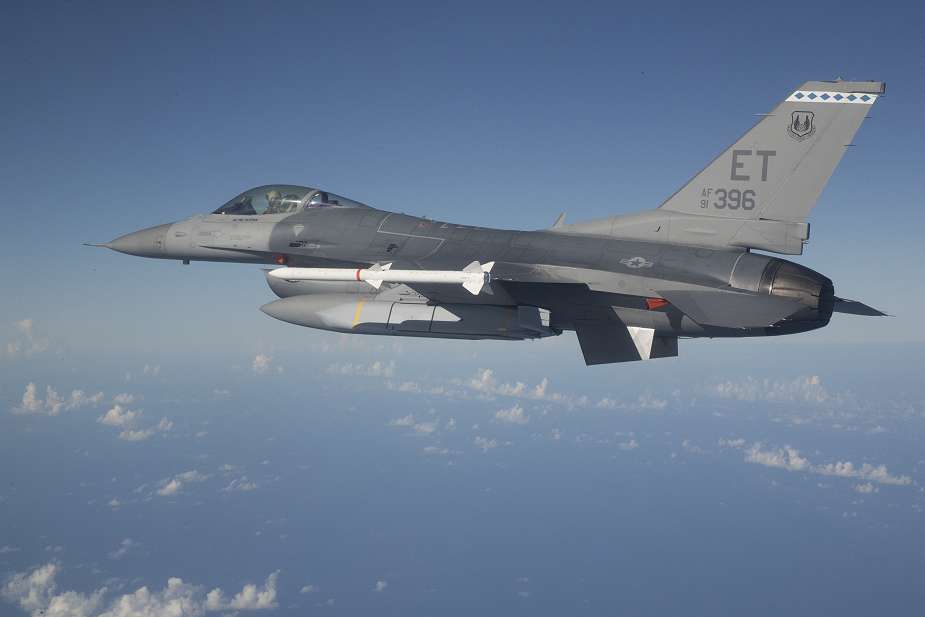Breaking news
US Approves Sale of JASSM-ER Air-to-Surface Missiles to Japan in a $104 Million Deal.
Washington, United States, August 28, 2023 - The U.S. State Department has given its nod for a potential Foreign Military Sale to Japan. The deal encompasses the Joint Air-to-Surface Standoff Missiles with Extended Range (JASSM-ER) and associated equipment, with an estimated value of $104 million. The Defense Security Cooperation Agency, responsible for formalizing defense trade agreements, has informed Congress about this prospective sale.
Follow Air Recognition on Google News at this link
 U.S. Air Force Major Jacob Rohrbach, a pilot assigned to the 40th Flight Test Squadron at Eglin Air Force Base, Florida, releases the first Joint Air-to-Surface Standoff Missile Extended Range, or JASSM-ER, from an F-16 over the Gulf of Mexico on September 19th, 2018. (Picture source U.S. DoD )
U.S. Air Force Major Jacob Rohrbach, a pilot assigned to the 40th Flight Test Squadron at Eglin Air Force Base, Florida, releases the first Joint Air-to-Surface Standoff Missile Extended Range, or JASSM-ER, from an F-16 over the Gulf of Mexico on September 19th, 2018. (Picture source U.S. DoD )
Japan has expressed its intention to acquire up to fifty (50) AGM-158B/B-2 JASSM-ER missiles. The package also includes JASSM Anti-jam Global Positioning System Receivers (JAGR), training missiles, missile containers, and a comprehensive range of support equipment and services. These encompass spare parts, consumables, integration and test support, software delivery, technical documentation, and more.
The Joint Air-to-Surface Standoff Missile (JASSM) is a stealthy, air-launched cruise missile developed by Lockheed Martin for the United States Armed Forces. The development of the JASSM-ER was initiated after the US Air Force sought improvements to the original AGM-158 JASSM. Despite sharing the same external dimensions as its predecessor, the JASSM-ER incorporates a more efficient engine and a larger fuel volume, attributes that contribute to its extended range. The missile maintains a 70% hardware commonality and 95% software commonality with the original AGM-158 JASSM.
Japan has expressed interest in the JASSM-ER. In its 2019 Mid-term Defense Program, Japan proposed the acquisition of the JASSM-ER and the AGM-158C LRASM for its F-15J fleet. This intention materialized when the US State Department approved Japan's request to procure up to 50 JASSM-ERs in August 2023. This information is sourced from Wikipedia's article on the AGM-158 JASSM.
The JASSM-ER, or Extended Range variant, is an enhancement of the original JASSM. This missile is equipped with a 1,000-pound (450 kg) armor-piercing warhead and is designed to target and destroy high-value, well-defended targets from a standoff distance.
The JASSM-ER entered service in 2014, and by September 2016, Lockheed Martin had supplied the U.S. Air Force with a total of 2,000 JASSMs, which encompassed both the original and extended range versions. In terms of specifications, the JASSM-ER weighs approximately 2,600 lb (1,200 kg), has a wingspan of 8 ft 10 in (2.7 m), and is powered by a Williams F107-WR-105 turbofan engine. Notably, its range exceeds 575 mi (926 km), a significant increase from the original JASSM's range of about 230 mi (370.4 km). The missile employs a combination of GPS, INS (Inertial Navigation System), and IIR (Imaging Infrared) for guidance, target recognition, and terminal homing.
The missile's versatility is evident in its compatibility with various aircraft. It has been integrated into the B-1, B-52, F-15E, and F-16. For instance, the B-1B can be equipped with up to 24 JASSM-ERs, the B-2 can hold 16 missiles, and the B-52, when fitted with the 1760 Internal Weapons Bay Upgrade (IWBU), can accommodate 20 JASSM-ERs. Additionally, the U.S. Navy's F/A-18E/F Super Hornet and F-35C fighters are also capable of deploying this missile.
This acquisition is seen as a strategic move to bolster Japan's defense capabilities against evolving threats. The missiles will provide Japan Air Self-Defense Force (JASDF) fighter aircraft, including the F-15J, with advanced long-range strike capabilities. The U.S. authorities have expressed confidence in Japan's ability to integrate these systems seamlessly into its military framework.
Lockheed Martin, based in Orlando, FL, is slated to be the primary contractor for this deal. As of now, there are no offset agreements linked to this sale. Furthermore, the deal's execution will not necessitate any additional U.S. Government or contractor representatives' deployment to Japan.



















